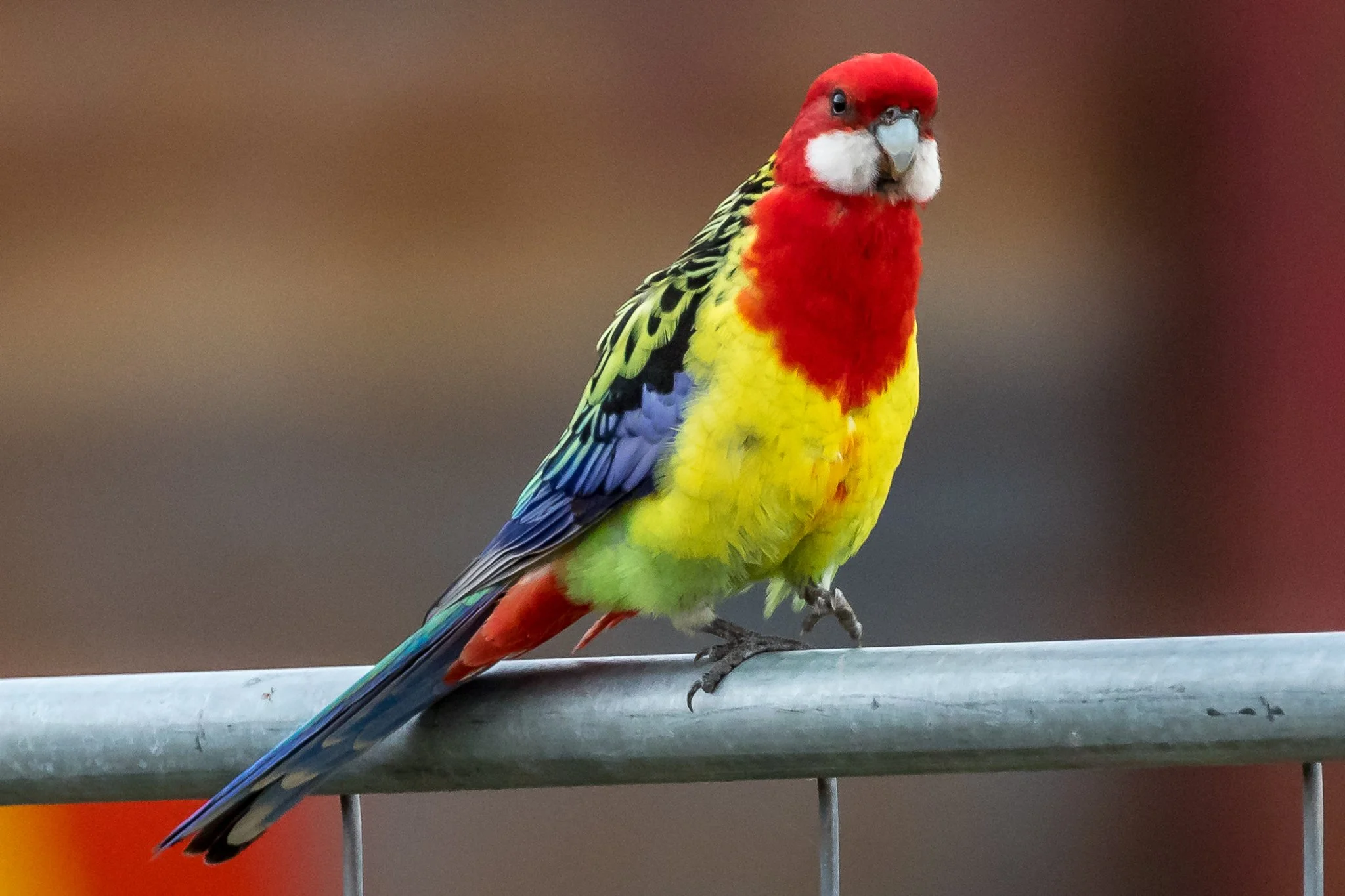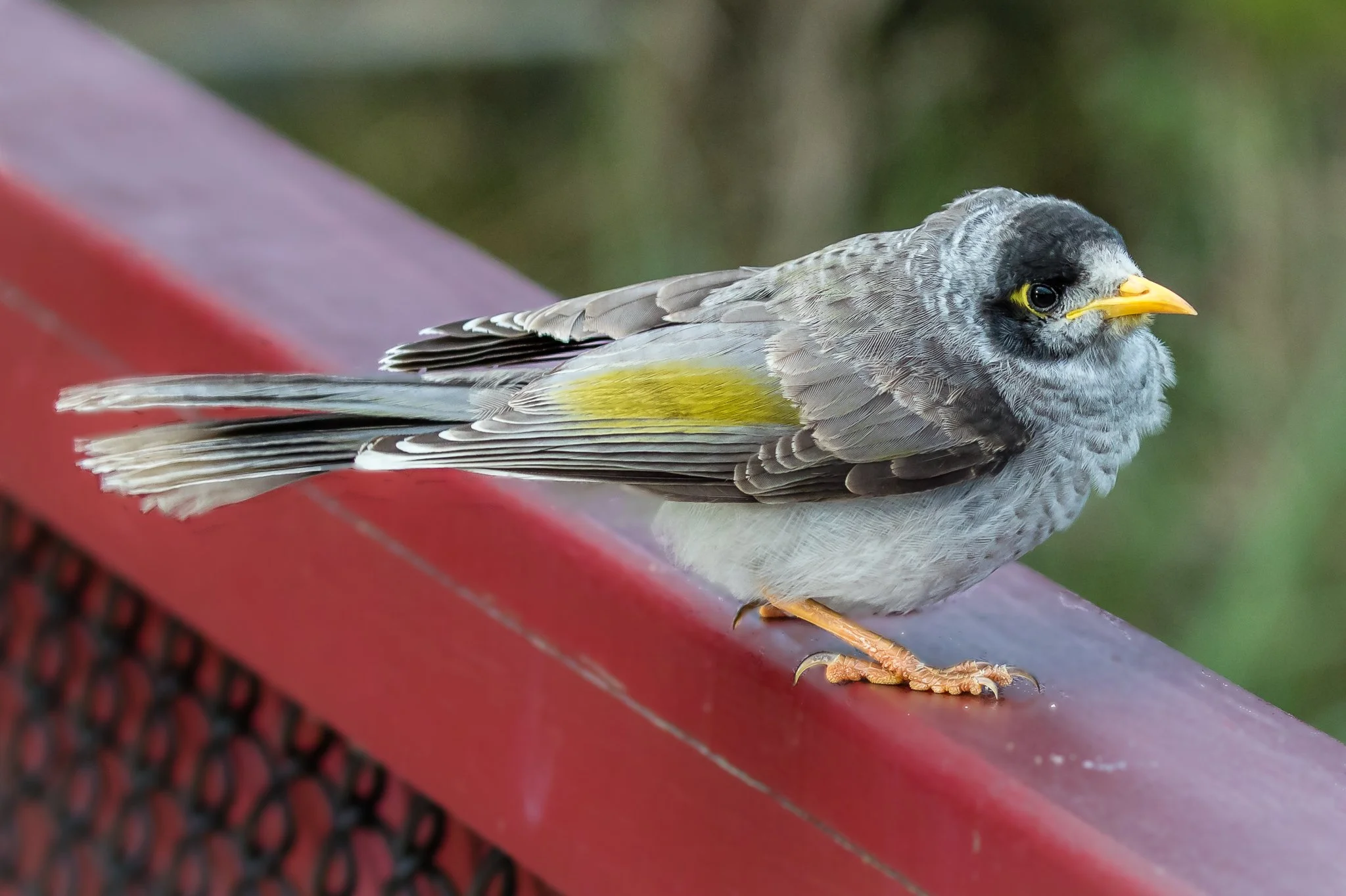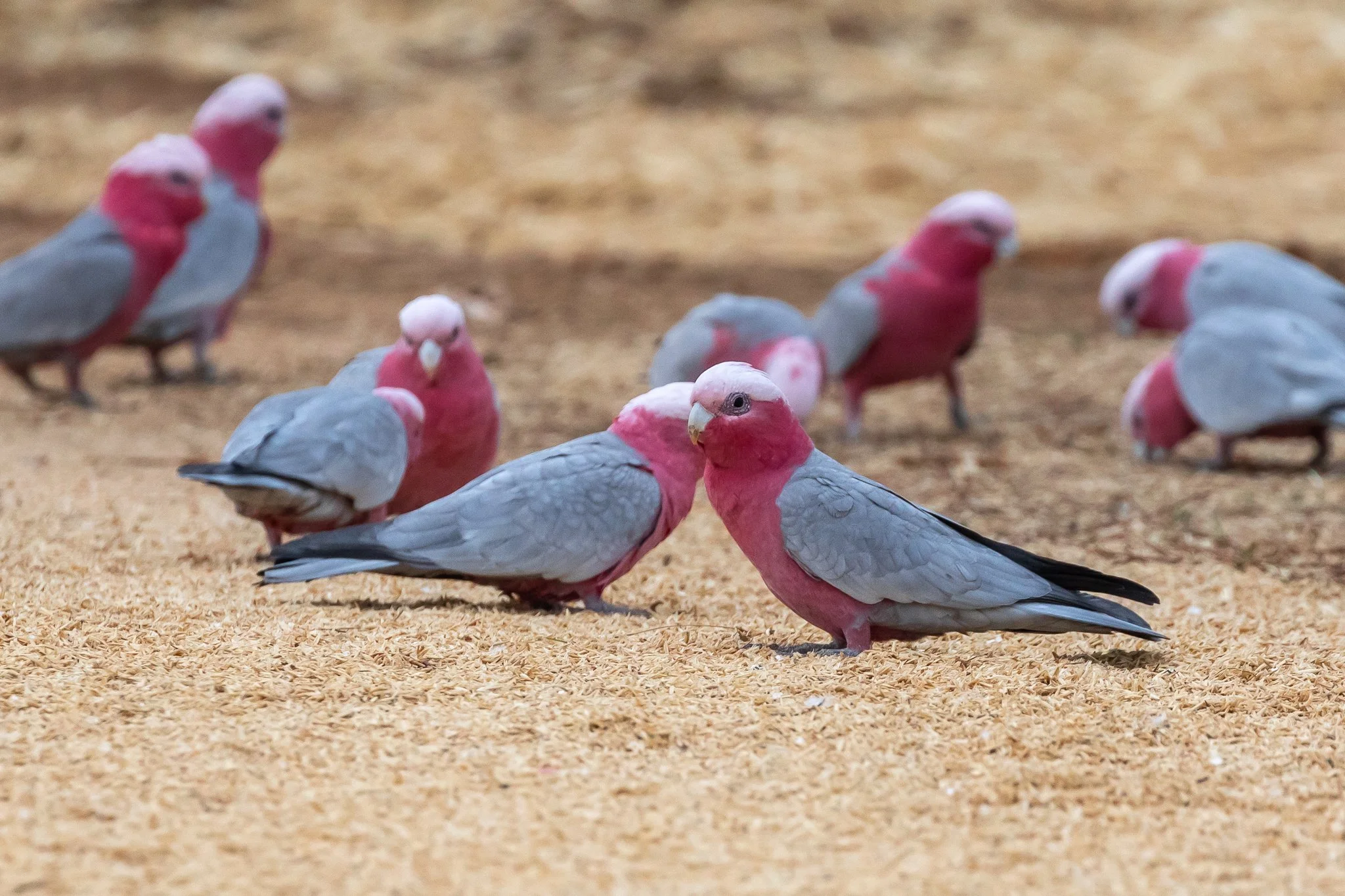In the bush
The Australian “bush” consists of large deserts, arid scrub, open woodlands and rainforests that range from alpine to temperate to tropical. Land clearing and habitat loss has reduced bird numbers, especially in the woodlands. The long distances between remaining patches of bush hinders the spread of small birds and honeyeaters. Today the story of the bush is often drought, fire, and sometimes restoring rain. But habitat loss and climate change must be addressed for the survival of our farmlands and wildlife.
Picture: The Australian Magpie is an Australia wide symbol of the bush. As the land was cleared, larger birds like the magpie have thrived in the open farmlands, at the expense of the smaller birds.
Eastern Rosellas add a splash of colour in the woodlands. Often seen on the ground, feeding on seeds. Australia’s six Rosella species span most of the continent.
The Crested Pigeon occurs Australia wide and is often seen on the ground beside the road, feeding on seeds and fruits.
The Nankeen Kestrel prefers open grasslands and farmlands. It is seen watching from its perch or hovering above its prey to dive on mice, small birds or lizards.
Magpie-larks are found across Australia, always close to the water needed to construct their mud nest.
Noisy Miners are the most agressive of Australian honeyeaters, dominating an ever increasing area of east Australia, as bush is cleared to create the open country they prefer.
Galahs are thriving in the wheat-belt, often feeding on an easy meal of spilt grain.
Further west these Straw-necked Ibis feed in open paddocks, clearing up pests such as grasshoppers and locusts.
Heading towards the arid country you will see Apostlebirds on the roadside in their family groups, along with other community minded birds, the babblers and the choughs.
Smaller birds have suffered particularly from the loss of dense and shrubby bush. Nevertheless the Red-capped Robin is occasionally seen for a spectacular splash of red!
The Brown Thornbill uses dense bush to provide food, shelter and safety. Numbers of the smaller species are still declining.
Also endangered by habitat loss, these Glossy Black-Cockatoos drink at a farm dam, descending last minute in the safety of the evenings fading light.
The Emu is common across Australia’s dry grasslands. At 1.5 to 1.9 metres tall it is Australia’s largest bird..
In the tropical swamps of north and along the east coast, Comb-crested Jacanas trip lightly across lily-pads.
In the Northern Territory, a group of Brolgas make use of one of the Territory’s relatively few rivers.
Grey-crowned Babblers are seen widely across Australia, often travelling in family groups of 10 or more, but this russet tinted version is only seen in the tropical north.
The Hooded Parrot is unique to the savannas of the Northern Territory. To nest they dig a 50 to 80 cm tunnel into a termite mound.
This beautiful male Australian King-Parrot lives in the woodlands and rainforests of Australia’s east coast.
Large areas of the New South Wales east coast forests were decimated by recent fires. The trees shown are dead, but a green carpet is growing below, providing seeds for this Crimson Rosella.
After the fires some species are recovering well, these two Variegated Fairy-wrens raised a family of three chicks.
The friendly Eastern Yellow Robin lives in woodlands and rainforest but venture into farm clearings, feeding on insects and spiders.




















